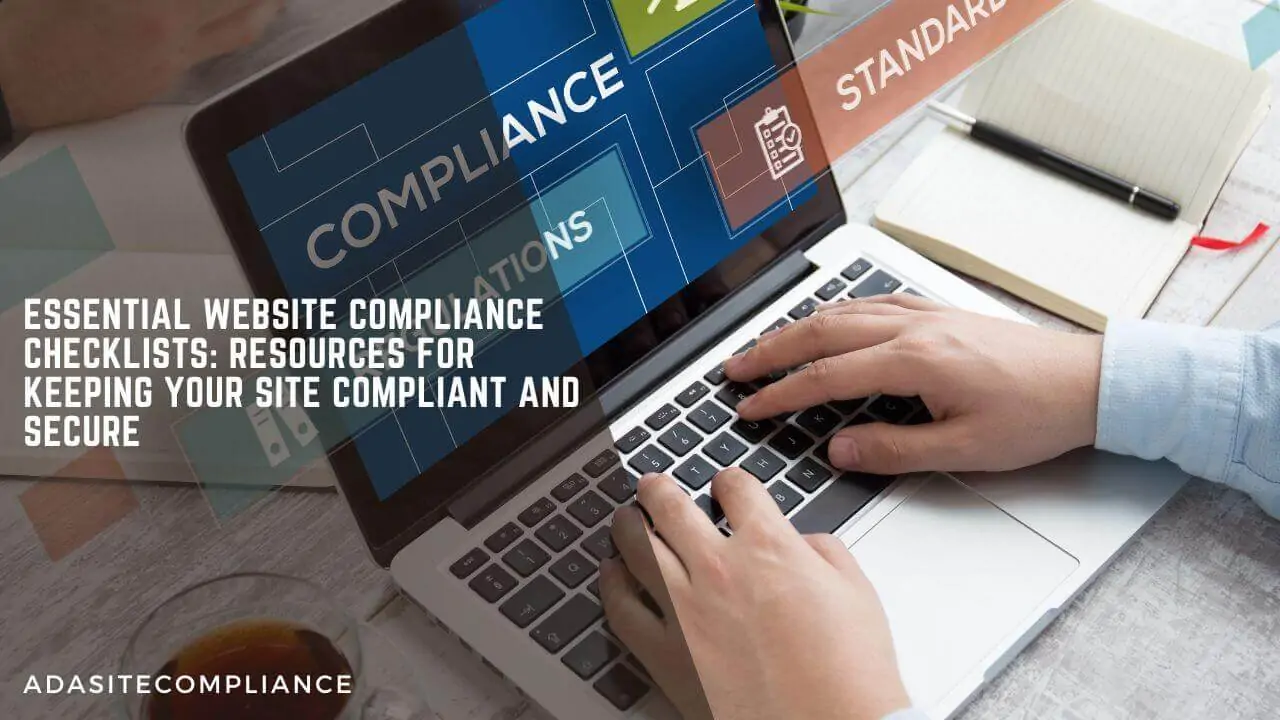
Website Compliance Checklist: How To Ensure Your Site Meets All Requirements
The internet has become a bustling marketplace, attracting customers and a complex web of regulations. From data privacy to accessibility, ensuring your website operates legally and ethically can feel like navigating a maze. However, a well-designed website doesn’t have to be a compliance minefield.
Read on to discover a comprehensive checklist that will guide you through the essential areas to ensure your website meets all requirements and thrives in the digital landscape.
Accessibility
Making your website accessible is vital for reaching a broader audience and complying with legal requirements. ADA website compliance is essential to ensure all users, including those with disabilities, can access your content.
Below are the key accessibility features to implement:
ADA website compliance
In the United States, the Americans with Disabilities Act requires website ADA compliance, ensuring websites are accessible to users with disabilities. This includes features like providing alternative text descriptions for images, ensuring keyboard navigation functionality, and using sufficient color contrast.
Alternative text descriptions
Every image on your website should have descriptive alt text. This helps visually impaired users understand the content of the image through screen readers.
Keyboard navigation
Your website should be fully navigable using a keyboard. This is crucial for users who cannot use a mouse and rely on keyboard commands to move through web pages.
Color contrast
Ensure sufficient color contrast between text and background. This improves readability for users with visual impairments.
By implementing these features, you can make your website more inclusive and compliant with accessibility standards. Website accessibility not only ensures legal compliance but also enhances user experience for all visitors.
Content Compliance
Ensuring your content meets compliance standards is essential to avoid legal issues and maintain credibility. Here are the key elements for content compliance:
Visual design
Consider the visual elements of your website content. Using a clear and consistent visual hierarchy, with well-defined foreground and background colors, improves readability for everyone. Tools like free color contrast checker are available online to help you ensure your color choices meet accessibility standards. This is especially important for users with visual impairments who may rely on sufficient color contrast to distinguish text and information.
Copyright and trademark
Be mindful of using copyrighted material without permission. Only use images, videos, and text you have the rights to, or that are clearly marked for reuse. Similarly, avoid using trademarks without authorization.
Accuracy and transparency
Strive to provide accurate and up-to-date information on your website. If you make claims, be sure to back them up with evidence. Be transparent about your business practices and data collection methods.
Following these guidelines helps protect your business and builds trust with your audience. Regularly updating web content to reflect current standards and practices is key to maintaining compliance.
Data Privacy
Data protection is paramount in today’s digital landscape. Websites must adhere to regulations like GDPR and CCPA to protect user data and privacy.
Below are the measures to maintain data privacy:
Privacy policy
A clear and concise privacy policy is essential. This document should outline what data you collect from users, how you use it, and their rights regarding their information.
Cookie consent
Many regions require websites to obtain user consent before placing cookies on their devices. Make sure you have a clear and easy-to-understand cookie banner in place, and that users can opt out of non-essential cookies.
By implementing these measures, you can safeguard user data and maintain compliance with privacy regulations such as GDPR. Prioritizing online privacy demonstrates your commitment to protecting user information and ensuring a trustworthy experience for website visitors.
Security
Website security is crucial for protecting user data and maintaining trust. Implementing robust security measures can prevent data breaches and other cyber threats.
Below are the critical security measures to implement:
SSL certificate
An SSL certificate encrypts data transmission between your website and users’ browsers. This safeguards sensitive information like credit card details and login credentials.
Regular updates
Outdated software and plugins can create security vulnerabilities. Make sure to keep your website’s content management system, themes, and plugins updated with the latest security patches.
By prioritizing security, you can protect user data and maintain a trustworthy online presence. Data protection is essential for fostering user trust and ensuring compliance with legal standards. Website owners must regularly conduct security audits to identify and address potential vulnerabilities.
Additional Considerations
In addition to the main compliance areas, there are other important factors to consider. These elements help ensure your website is user-friendly and legally sound.
Below are the additional considerations to implement:
Terms of use
A terms of use document outlines the rules and regulations governing how users can interact with your website. This can include things like limitations on content submissions, user conduct expectations, and dispute resolution procedures.
Contact information
Make it easy for users to contact you. Provide clear and prominent contact information on your website, such as an email address, phone number, or contact form.
Stay informed about cybersecurity threats
The cybersecurity landscape is constantly evolving. It’s important to stay informed about the latest threats and vulnerabilities. Many reputable organizations provide resources and guidance on website security best practices. Consider subscribing to alerts from cybersecurity tools vendors to be notified of new threats and available security patches.
Addressing these additional considerations enhances your website’s professionalism and accessibility. Referencing guidelines from a government website can also provide valuable insights into meeting legal standards.
Final Thoughts
Complying with website regulations might seem daunting, but with careful planning and this comprehensive checklist as your guide, you can ensure your website operates legally, ethically, and accessibly. By prioritizing user experience, data security, and content accuracy, you’ll not only avoid legal pitfalls but also build trust and credibility with your audience. Remember, a compliant website is the foundation for a thriving online presence. So, start implementing these essential compliance measures today.




